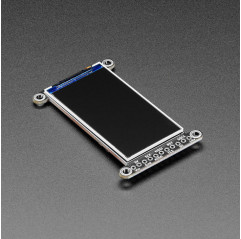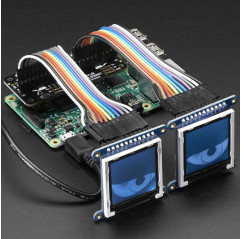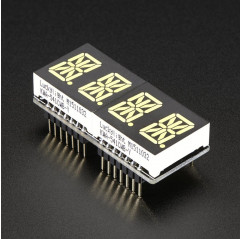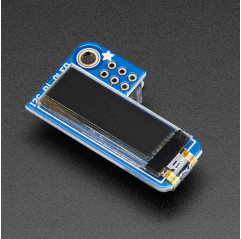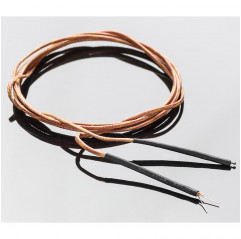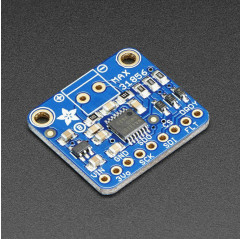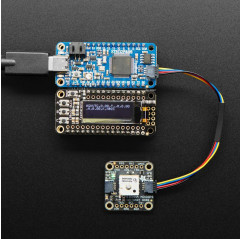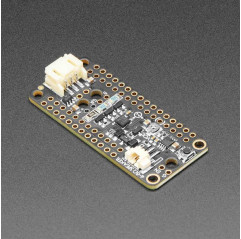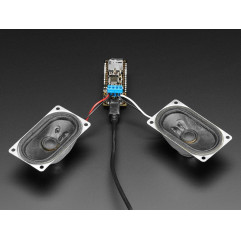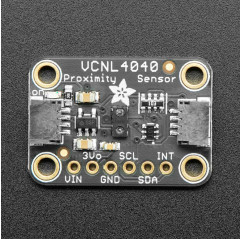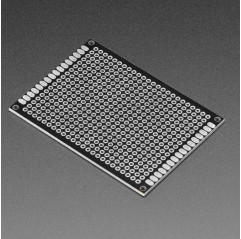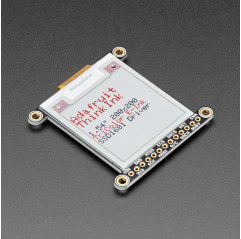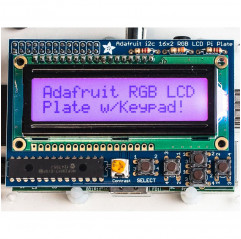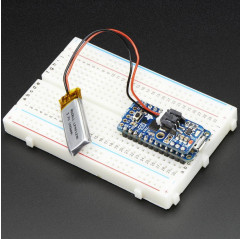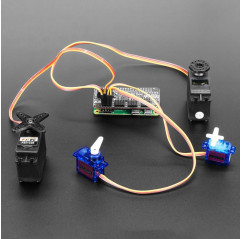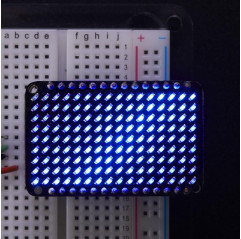This lovely little display breakout is the best way to add a small, colorful, and very bright display to any project.
Since the display uses 4-wire SPI to communicate and has its own pixel-addressable frame buffer, it can be used with every kind of microcontroller. Even a very small one with low memory and few pins available! The 1.9" display has 320x170 16-bit full-color pixels and is an IPS display, so the color looks great up to 80 degrees off-axis in any direction. The TFT driver (ST7789) is very similar to the popular ST7735, and tthe Arduino library supports it well.
The breakout has the TFT display soldered on (it uses a delicate flex-circuit connector) as well as an ultra-low-dropout 3.3V regulator, auto-reset circuitry, and a 3/5V level shifter so you can use it with 3.3V or 5V power and logic. Adafruit also had a little extra space, so they placed a microSD card holder so you can easily load full color bitmaps from a FAT16/FAT32 formatted microSD card. The microSD card is not included.
Of course, we wouldn't just leave you with a datasheet and a "good luck!" - Adafruit have written a full open-source graphics Arduino library that can draw pixels, lines, rectangles, circles, text, and bitmaps as well as example code. The code is written for Arduino but can be easily ported to your favorite microcontroller! Wiring is easy, we strongly encourage using the hardware SPI pins of your Arduino as software SPI is noticeably slower when dealing with this size display. For Raspberry Pi or other Single Board Computer Python users, there is a user-space Pillow-compatible library. For CircuitPython there's a displayio driver for native support.
This display breakout also features an 18-pin "EYE SPI" standard FPC connector with flip-top connector. You can use an 18-pin 0.5mm pitch FPC cable to connect to all the GPIO pins, for when you want to skip the soldering.
Please note! This display is designed original for smartwatches and similar, where there's a glass over the screen. Without something gently holding the screen down, the backlight can eventually peel away from the TFT. (It's not destructive but it's unattractive) You can prevent this by, ideally, adding a plastic or glass cover/overlay. If using bare, try dabbing a touch of E6000 or similar craft glue on the thin side edges, or using a thin piece of tape to keep the front TFT attached to the backlight.
Technical Details
Specifications:
1.9" LCD TFT display
Built-in microSD slot
1x11 header for easy breadboarding
4 x 0.1" / 2.5mm mounting holes in corners
TFT screen dimensions: ~46mm x 25mm
Overall dimension: 57.2mm x 36.6mm x 5.2mm
Mounting holes: 52mm x 31.7mm
EYE SPI 18-pin FPC Connector:
VIN (3 to 5V DC power)
Backlight (3~5V logic PWM optional input)
Ground
SPI Clock (3~5V logic in)
SPI MOSI (3~5V logic Microcontroller Out, Screen/SD In)
SPI MISO (3~5V logic Microcontroller In, Screen/SD Out)
TFT Data/Command (3~5V logic in)
TFT Reset (optional 3~5V logic in)
TFT SPI Chip Select (3~5V logic in)
SD Card SPI Chip Select (3~5V logic in)
Unused
Unused
Unused
Unused
Unused
Unused
Unused
Unused
Product Dimensions: 57.2mm x 36.6mm x 5.2mm / 2.3" x 1.4" x 0.2"
Product Weight: 9.6g / 0.3oz






